Marriage customs and traditions in the Arabian Gulf region
Arab societies in the Gulf countries are characterized by their adherence to their customs and traditions that were developed a long time ago, and when you look at the traditions of marriage within the Arab Gulf countries, you will notice the similarity greatly with excellence in a few customs. The customs and traditions of marriage in the Gulf countries are a combination of family unity, heritage and the teachings of the Islamic religion. In this article, you are on a date with the customs of some Gulf countries, perhaps you will feel that they are old and not suitable for the current era, but at the same time you will feel the warmth of the family and the values of generosity, respect and originality.
Recommend
Show key points
- Marriage customs across Gulf Arab countries emphasize family involvement, Islamic teachings, and cultural heritage, reflecting strong community values and familial bonds.
- In the UAE, simplicity and spontaneity distinguish marriage traditions, with practices like dowry negotiation, henna nights, and multi-day wedding celebrations involving traditional dances and feasting.
- Qatari weddings are notable for their cultural diversity and include unique customs such as the henna night, the gifting of the "daza" bundle, and a lamp-lit procession before the wedding.
- ADVERTISEMENT
- Omani marriage traditions are rich in symbolism, featuring dowry presentations, rose water rituals, the use of traditional mixtures like "jello," and ceremonial transitions into the groom’s home.
- Iraqi weddings involve distinct rituals like the treadmill ceremony and "Nishan," with emphasis on religious validation, symbolic gifts, and multi-layered celebrations combining Islamic and cultural elements.
- Bahraini weddings maintain strong traditional aspects, including the dowry "delivery procession," the use of turmeric and henna rituals, and rooms specially decorated for the bride, blending old customs with modern adaptations.
- Common themes across these Gulf cultures include segregated celebrations by gender, public displays of generosity through food and gifts, and various forms of henna and ornamentation to honor the bride.
Until this time, Arab families still contribute significantly to the marriage of their children, from the smallest details that begin with choosing the bride to agree on the material details of the marriage, and even the form and place of the celebration. You will find consanguineous marriages that are very prevalent, unlike most countries in the world that do not accept consanguineous marriages. You will also find young marriages where some marriages take place and the newlyweds are still in school in their teens or early twenties.
You are on a date with weddings that blend folk music, traditional dances and national costume with huge food feasts that are the way Arabs express generosity. You will find similar stages of bride request, engagement, dowry, gifts, henna of the bride, marriage contract, Islamic marriage, and then the wedding, which represents the announcement of marriage and its announcement to everyone and sharing feelings of joy with family and friends.
Simplicity and spontaneity in the customs and traditions of marriage in the Emirates
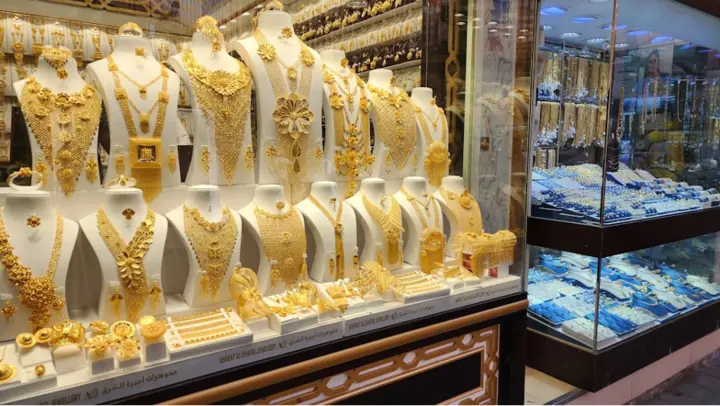
Marriage customs and traditions in the UAE are characterized by simplicity, spontaneity and family warmth, in addition to the diversity derived from the customs of the Gulf region and the teachings of the Islamic religion. The marriage tradition begins with the so-called "marriage", where in the past, marriages were always carried out within the same family in the same tribe. Once a young man reaches the legal age of marriage, parents look for a suitable wife from the girls of the family, in order to increase family cohesion and strengthen internal relations and interests as well. In the rare cases where a girl from outside the family is engaged, the "matchmaker" visits the girl, gets to know her and asks about her.
The young Emirati cares about the morals of the girl and the social status of her family. The Emirati youth is committed to the customs that oblige the young man to cover all the expenses of marriage, including the dowry, preparing and establishing the house, the marriage ceremony and the feast. The bride is responsible for learning cooking and household tasks. In the past, the groom's mother used to go with one of the women of the village or neighborhood to visit the bride's house and get to know her mother, and this was more important than getting to know the bride herself. During that visit, the bride's mother enumerated her daughter's good qualities and morals. When determining the dowry "the gift that the groom gives to the bride" takes into account the material conditions of the groom and his means, and sometimes the dowry is money, gold, livestock or property.
One of the customs of marriage in the UAE is the so-called "gold", which is clothes, perfumes and other things that the bride needs, as well as gifts given to her family and the necessary household needs of food supplies, which are called "Al Meer", so the groom also prepares them after the bride's request. The wedding is preceded by the days of the henna ceremony, in which the groom visits his bride carrying gold, mir and all other gifts, and the bride prepares at the ceremony for her wedding, dipping her hands and feet in henna until the elbow, and on the day before the wedding, the newlyweds' parents go to prepare the marital home.
The wedding celebration usually takes place in the bride's house, and lasts from two days to 7 days sometimes, during which time the bride's family hosts the groom in their home, and at the end of the period, the bride's family with relatives and neighbors visits the bride to her home. The wedding includes folk dances such as al-Ayala, men dance with swords and used to fire shots in the sky but now refrain from doing so.
Do not forget one of the most important traditions to hold banquets during the wedding, and it is full as it is their way of expressing generosity and giving, and the mash dish is one of the most important dishes for banquets, which is wheat and meat, and sweets and drinks are served and the bride is invited to her home in what is called "Zaffa Al-Dhahi" to start a new life and family.
Qatar and the traditions of the procession of lamps for the bride's house
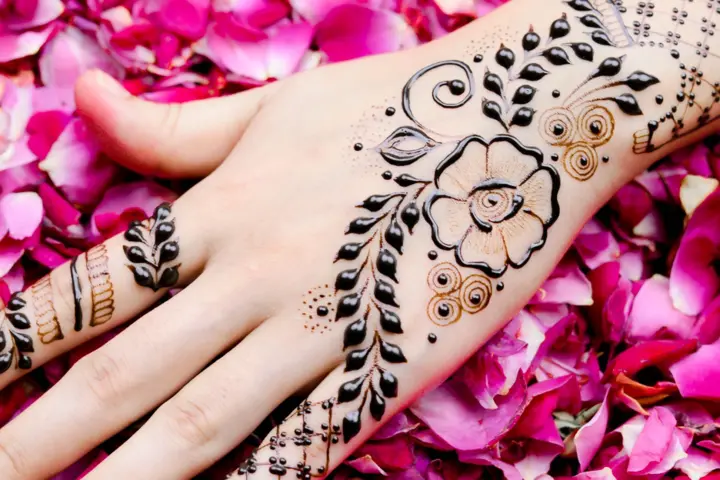
Qatar's marriage traditions and customs are similar to those in the Gulf, but you'll notice the cultural and social diversity within Qatari weddings. The engagement begins with the exchange of rings, which symbolizes the commitment to the common life between the newlyweds in a celebration organized by the two families, where special dishes are prepared for the hospitality of the couple's parents. Days before the Qatari wedding, the henna night is celebrated and attended by women only and henna is engraved on the bride's body such as hands and feet, and sometimes the invited women participate in the tradition of drawing henna and during the celebration the women sing, dance and drum for long hours and participate in eating it is an indispensable appearance.
One of the customs of marriage in Qatar is to prepare the so-called "daza", which is a large bundle inside which the bride's distinctive clothes specially prepared for use after marriage are placed, and another small bundle is placed inside it with an amount of money and the amount of money is determined according to the capabilities of the newlyweds' family. The "khila" is a room in the house of the bride's family, which is the room in which the newlyweds stay in the first week of their marriage, and sometimes extends for ten days after which the newlyweds move to the marital home.
Note in the henna tradition that women's parties are separated from men's parties, and guests at both parties enjoy music, dancing, tambourines, dessert and drinks. The women of the two families gather in the bride's henna, and cover the bride with green clothes that cover her entire body except the hands and feet to prepare them for henna engraving.
As for the traditions and customs of the wedding ceremony itself, the bride is adorned with decorations, wears all her gold jewelry, receives women in her house where they sing and dance, and men gather in the groom's house, and before the evening prayer they carry lit lamps and go in procession to the house of the bride's family.
All guests as well as the newlyweds adhere to the traditional dress at the wedding ceremony in keeping with Qatari heritage, adding a special atmosphere to weddings. Gifts are given from family and friends with the exchange of congratulations and wishes for the future of the newlyweds. Hospitality is provided to the guests in great abundance to show generosity and food is distributed to neighboring houses as well, which is one of the manifestations of generosity next to it is a way to publicize marriage between neighbors in the region, and publicity is one of the most important conditions for marriage in Islam.
The tradition of spraying rose water on wedding guests is one of the customs of marriage in Oman
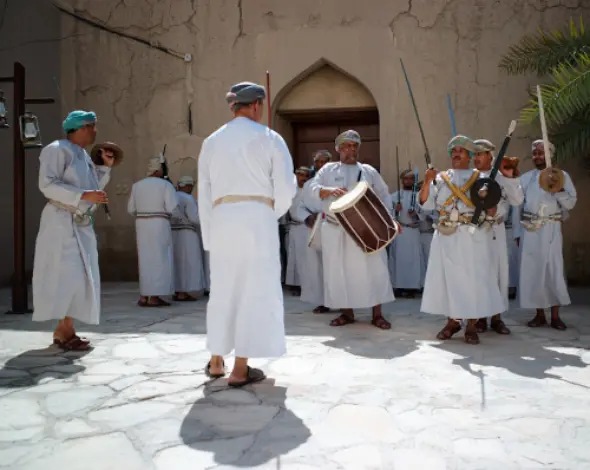
When looking at the customs and traditions of marriage in Oman, we will find that they begin with the engagement and the presentation of the dowry, which is called "right" in the culture of the Omanis, and the two families agree to marry through an intermediary, and the groom and the men from his family go to ask the bride from her family and then the women of his family visit the women from the bride's family to agree on the dowry.
The groom prepares the dowry and the invitees come to the groom's house to carry the dowry to the bride's house, accompanied by a popular zaffa with special songs, and they also accompany the "mandoos", a wooden box inside which gold and jewelry are placed. Upon arrival at the bride's house, one of the women from the groom's family displays the dowry and gifts from the wedding supplies, as well as the gifts that the groom bought for his bride and her family, and likewise the mother of the bride chooses one of her family to display the gifts prepared by them for the groom and his family.
After this, the marriage is also called the "Queen", where men gather in the mosque after evening prayers and Omani sweets are served with bitter coffee, then oud incense and rose water is sprinkled on the guests after eating sweets and coffee, a tradition they think brings happiness to the newlyweds.
The groom goes to dinner at his family home and then returns to the bride's house to read Al-Fatihah on her head and pray on the hem of her dress and the women frequent and the bride wears the wedding ring. Oman is characterized by a tradition called "Jalo Day" and jello is a substance composed of sandalwood powder, saffron, rice flour, nutmeg and eggshell, and these ingredients are mixed with rose water and 7 unmarried daughters anoint the bride's body with this mixture and believe that it blesses the girls and speeds up their marriage as well.
Henna is placed on the bride's legs and these customs last for three days and they call that period "harema", and the bride is in the most beautiful view on the day of henna, where she is decorated with her jewelry and shows her foot only, and she is sitting in the "hopscotch", which is a bed decorated with green, red and blue fabric, and mirrors are placed on all sides of the bed after it is covered with cloth, and they put a table with candles, incense and the bride's henna and chant folk songs, and the groom and his family come to the bride's house to share with her family part of the celebration and then return home to complete The concert for him and his family.
The traditions and customs of the wedding ceremony itself are to grooming and decorate the bride, and the groom and his family attend and are hospitalized first. The groom's mother then asks the bride's mother permission to enter the bride and hand her the dowry paper from the court. The bride then visits from her family's house to the marital home and breaks eggs on her leg when she leaves the house as a symbol of fertility and reproduction, and when she arrives at the groom's house, she slaughters a sacrifice before entering as a sign of a new life and a new home, and upon arrival to her room, her groom receives her at the door, then the bride sits to the right of the groom and the audience reads Quranic verses from the image of light as a blessing, and then folk bands sing songs. The next day, a large feast of food and sweets is held in the groom's house and is called "Tasbiha" and the attendees bless the newlyweds and give gifts and money.
Marriage customs and traditions in Iraq and the treadmill ritual
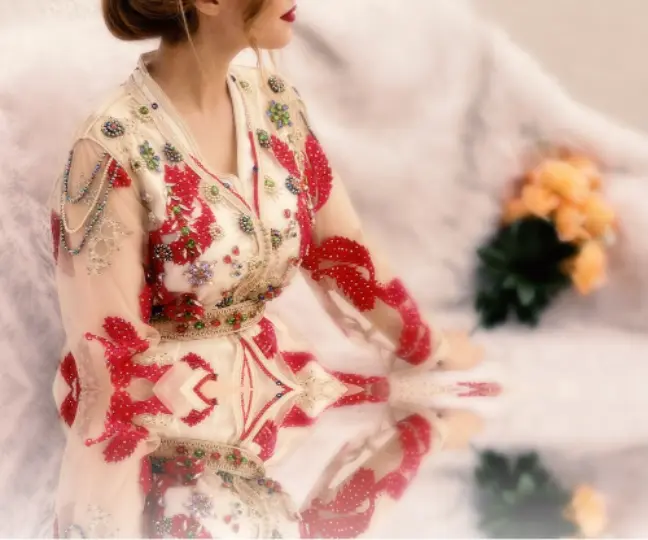
The groom chooses his bride in Iraq from among classmates, work or neighbors. His family visits the bride's family and acquaintances and the details of the marriage are agreed upon in case of consent which is considered essential from the bride's family. The bride's family is interested in asking about the groom in his workplace, residence and college as he was still studying and knowing his family's reputation.
Then the "walker" ritual is practiced where the groom and his family go to the bride's house to make sure she agrees and formally asks for her hand. If they answered yes, Fatiha is read and pomegranate sherbet and rose water are distributed, as well as Turkish sweets and coffee. The engagement takes place at the bride's house and is attended by those close to the two families, exchanging gold rings for the bride and silver or platinum rings for the groom.
The engagement period is agreed that they prefer not to be prolonged, and the groom gives golden gifts to the bride and dines with a celebration of singing and music. After a period of engagement and before marriage, the "Nishan" is celebrated, which is a dance ceremony, and the groom presents during the ceremony precious gifts to the bride such as gold, jewelry, clothes and shoes, and reads Quranic verses to bless the newlyweds, and the celebration is simple in the bride's house, or flashy in a place prepared for that according to the financial conditions of the two families.
One of the customs and traditions of marriage in Iraq is that two days or more before the wedding, the marriage is held by the sheikh or imam, and the groom and bride are in two separate rooms. The sheikh asks the bride three times if she agreed to marry before the marriage to make sure of her desire and after the marriage contract the bride wears a dress bought by the groom's mother and the bride sits at a table specially prepared for them, which symbolizes love, goodness and happiness. The newlyweds look towards the east and a mirror is placed on the table with a candlestick and a Qur'an, specially prepared and decorated bread, a basket of decorative eggs, a basket of nuts, as well as pomegranates, red apples, rose water, gold coins, and a box containing pearls and crystals.
As for the traditions of the henna day, it is similar to henna in other Gulf countries, where henna is placed for the bride and her friends and relatives, but henna is placed in the hands of the groom's mother, where henna is placed in the bride's palm with a coin and the bride's hand is closed on it until henna is dying, which is a custom that takes place in Turkish weddings as well.
The groom's henna ceremony takes place at his family home or restaurant and is attended by his male friends and relatives. The groom leads the wedding procession heading with his family and friends to the bride's house, releasing the horns in the bustle and songs to accompany the bride, and in the past, a wedding was held by lighting candles with children carrying olive branches and entering the wedding hall by singing, where a kosha prepared from a special decorated sofa dedicated to the newlyweds, and a celebration begins with dancing, songs and food banquets that extend throughout the night, and seven days after the wedding, the seventh day ceremony is held at the groom's father's house to present gifts to the newlyweds, and the bride wears her wedding dress and other dresses in this ceremony.
Bahrain and the tradition of the delivery procession
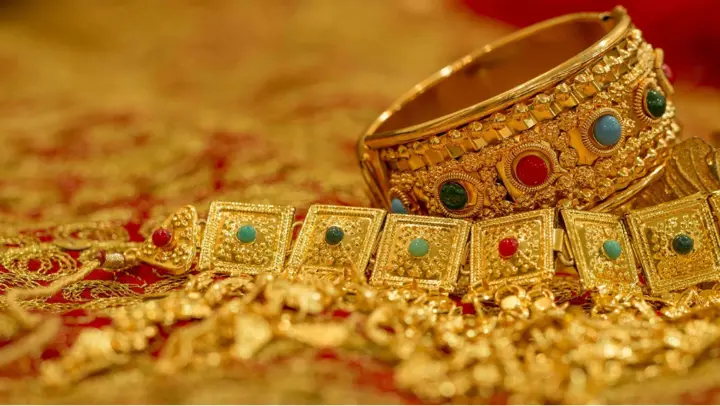
Bahraini marriages are also traditional, where the engagement takes place between the women of the two families, followed by a "night of consolation" in which the parents agree on the dowry and wedding costs to be borne by the groom, and the groom also provides a sum of money to the bride to prepare for her needs. The dowry is delivered in a special ceremony where the women of the groom's family set off in the "delivery procession" from the groom's house to the bride's house to hand over the dowry with a basket with the groom's gifts of clothes for the bride and they also carry large trays with sweets covered with colored cloth. During the wedding preparations, a woman has the job of preparing the mattress, covering the walls and ceiling of a room with a red cloth called "Bendira" for the bride's use.
The marriage takes place at the bride's house and offers dessert, fruit, nuts and coffee dishes. The sheikh or imam moves to the bride's room to ensure her approval, then the marriage is held, and in the old customs, the bride never leaves her home after the marriage until the wedding. The "daya" puts turmeric on the bride's body for three days and then removed with soap and water and they believe that it makes her skin bright, but now the girls go to the beauty salon as an alternative to traditional recipes. Henna rituals are conducted as usual, but they use dough with henna to retain the appearance of decorations without the red henna color and then the wedding with folk dances, music and feasting as usual.








